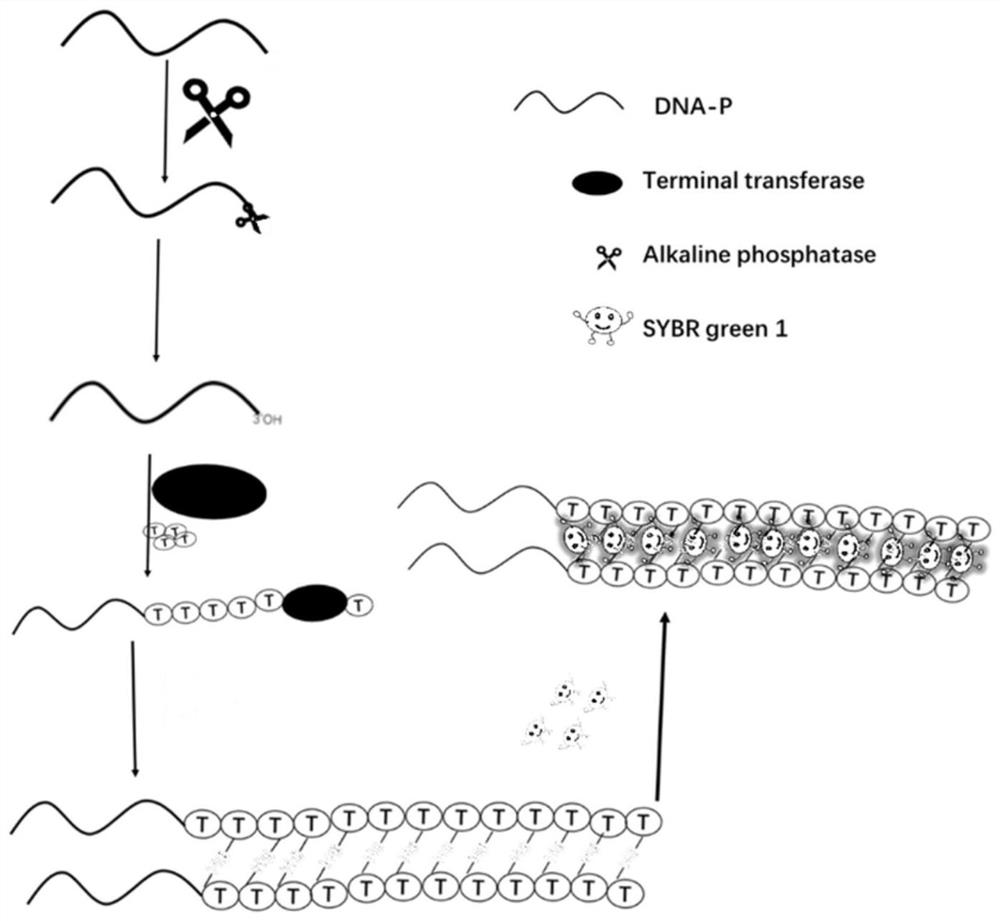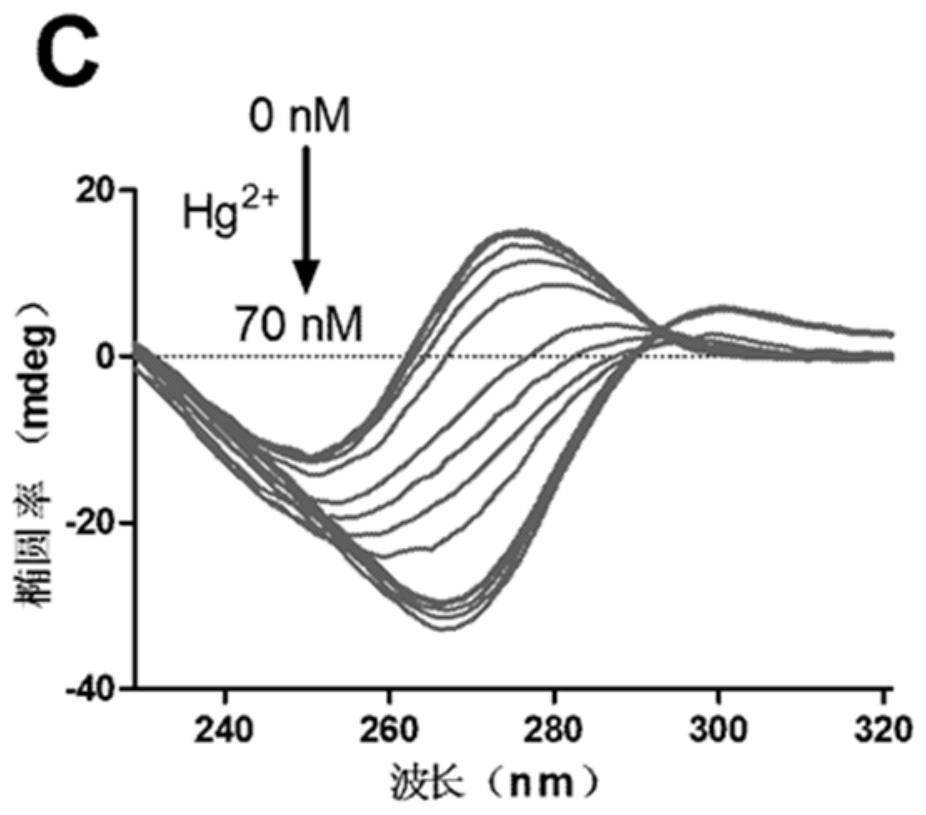A fluorescent chemical method and application for detecting alkaline phosphatase
A chemical method, phosphatase technology, applied in the field of enzyme activity detection, can solve the problems of toxicity and time-consuming operation steps, and achieve the effect of simple operation, high selectivity and high sensitivity
- Summary
- Abstract
- Description
- Claims
- Application Information
AI Technical Summary
Problems solved by technology
Method used
Image
Examples
Embodiment 1
[0078] Embodiment 1 Principle and feasibility verification of the inventive method
[0079] The detection schematic diagram of alkaline phosphatase (Alkaline phosphatase) of the present invention is as figure 1 As shown, in order to verify the feasibility of the present invention, the inventor detects three important links of the experiment, and the specific process is as follows:
[0080] 1. Terminal deoxynucleotidyl transferase (TdT) can catalyze the addition reaction at the 3'-OH end of ssDNA in a template-free manner. The specific implementation process is as follows:
[0081] (1) A 14nt primer (Primer) ssDNA-2 (5'-ACCCCCCACCCCCA-3') was designed and synthesized by Sangon Bioengineering (Shanghai) Co., Ltd.
[0082] (2) Mix primer ssDNA-2 containing 2.5μM, 1×TdT buffer (20mM Tris-HAc, 50mM KAc, 10mMMg(Ac) 2 , pH 7.9), 250 μM CoCl 2 , 0.75mM dTTPs and TdT (addition amount: 0U, 0.5U, 1U, 2U, 5U, even if the concentration of TdT in the system is 0U / mL, 25U / mL, 50U / mL, 100U...
Embodiment 2
[0097] The optimization of embodiment 2 experimental system
[0098] 1. Condition optimization for the best ratio of dTTPs to ssDNA-p
[0099] In order to achieve the best state of the detection system, we optimize the ratio of dTTPs / ssDNA-p, the steps are as follows:
[0100] According to the method in embodiment 1.3 (feasibility verification) (wherein the consumption of ALP is 2unit in the step (2), the final concentration of TdT is 250U / mL in the step (3), HgCl in the step (4) 2 The final concentration is 2.5μM), and the dTTPs / ssDNA-p molar ratio in the reaction system is set to 4000:1, 5000:1, 6000:1, 7000:1, 8000:1, 9000:1, 10000:1, 12000 :1, 14000:1, and measure the fluorescence intensity signal of the system to be tested.
[0101] The result is as image 3 Shown: by image 3 It can be seen that with the increase of the dTTPs / ssDNA-p ratio, the fluorescence signal enhancement of the detection system increases exponentially. In order to avoid data fluctuations and ob...
Embodiment 3
[0113] Example 3 Alkaline phosphatase activity detection
[0114] The specific implementation process of alkaline phosphatase activity detection is as follows:
[0115] (1) ssDNA-p containing 2.5 μ M primer probe, 1 × ALP buffer, ALP (final concentration of ALP 0 ~ 2500mU / mL; final concentration of ALP selected in this embodiment are: 0mU / mL, 0.025mU / mL, 0.05mU / mL, 0.25mU / mL, 0.5mU / mL, 2.5mU / mL, 5mU / mL, 50mU / mL, 250mU / mL, 500mU / mL, 2500mU / mL) samples were incubated at 37°C For 80 minutes, incubate at 90°C for 10 minutes to inactivate ALP, and finally cool the sample to room temperature for the next reaction.
[0116] (2) Add the sample obtained in step (1) to 5unit TdT (that is, the final concentration is 250U / mL), 1×TdTbuffer, and the final concentration is 250μM CoCl 2 , with a final concentration of 0.75mM dTTPs, mixed and incubated at 37°C for 70min, and then incubated at 72°C for 10min.
[0117] (3) 2.5μM HgCl 2 (final concentration) and the sample obtained in step (...
PUM
| Property | Measurement | Unit |
|---|---|---|
| correlation coefficient | aaaaa | aaaaa |
| correlation coefficient | aaaaa | aaaaa |
Abstract
Description
Claims
Application Information
 Login to View More
Login to View More - R&D
- Intellectual Property
- Life Sciences
- Materials
- Tech Scout
- Unparalleled Data Quality
- Higher Quality Content
- 60% Fewer Hallucinations
Browse by: Latest US Patents, China's latest patents, Technical Efficacy Thesaurus, Application Domain, Technology Topic, Popular Technical Reports.
© 2025 PatSnap. All rights reserved.Legal|Privacy policy|Modern Slavery Act Transparency Statement|Sitemap|About US| Contact US: help@patsnap.com



